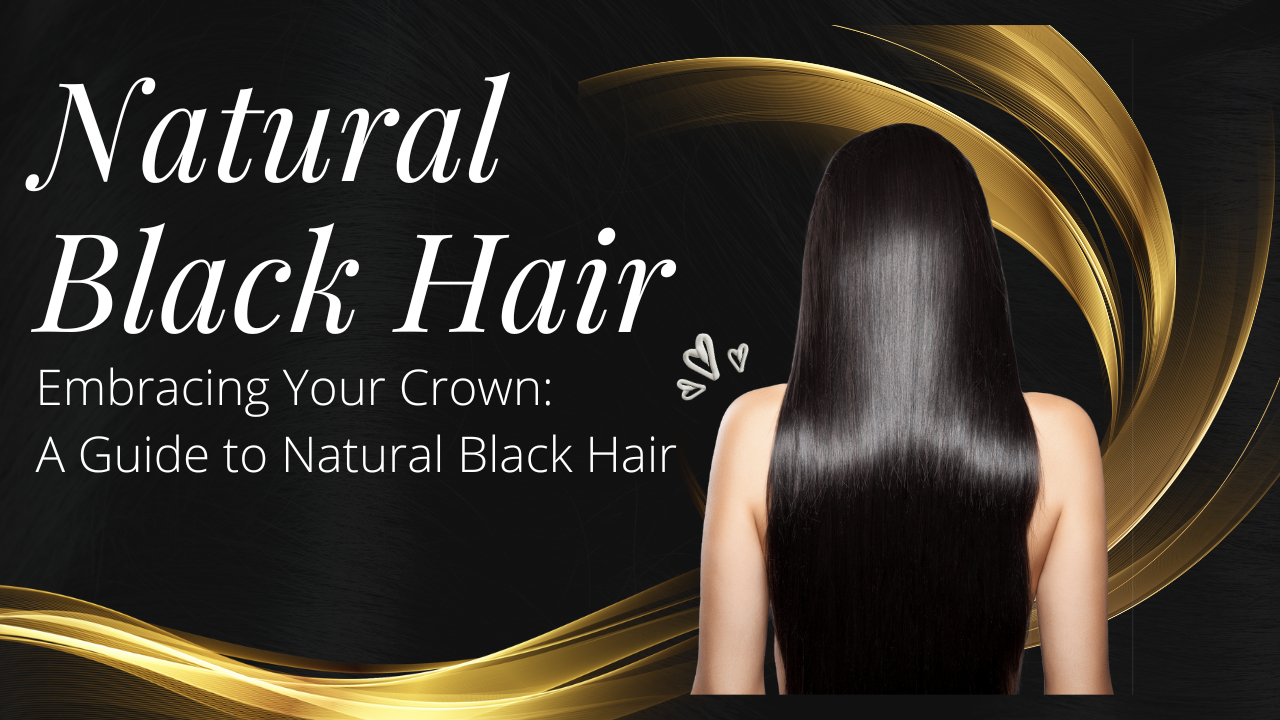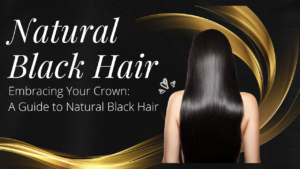Natural Black Hair
Embracing Your Crown: A Guide to Natural Black Hair
Natural black hair is a thing of beauty with a rich history and a wide range of textures and styles. From tight coils of 4C hair (from all the curly hair types, type 4C hair has the tightest curl pattern) to the loose waves of 2A (from all the hair types with waves, 2A hair has the loosest waves.), black hair is as diverse as the people who wear it. But navigating the world of natural hair can be challenging, especially for those who are new to embracing their texture.
This article is your one-stop guide to understanding and loving your natural black hair.
Understanding Your Hair Type
The first step to your healthy hair journey is to understand your hair type. The Andre Walker Hair Typing System classifies natural hair into four types (A-C), with each type divided into subcategories (A-C) based on curl pattern and strand thickness.
- Type A: Hair with wavy or loose curl patterns. This type of hair is thin and can maintain curls with few products or styling techniques.
- Type B: Hair with a well-defined curl pattern, ranging from loose coils to tight ringlets. This type of hair is often thick and can be prone to dryness.
- Type C: tightly coiled hair that grows in a Z-shaped pattern. This type of hair is very thick and requires a lot of moisture to stay healthy.
Knowing your hair type will help you choose the right products and styling techniques for your hair.
Creating a Haircare Routine
Healthy hair starts with a good haircare routine. Here are some key elements:
- Cleaning: Wash your hair regularly with sulphate-free shampoo to remove build-up without stripping your hair of its natural oils.
- Conditioning: Deep condition your hair regularly to keep it moisturized and prevent breakage.
- Moisturizing: Natural hair thrives on moisture. Use leave-in conditioner or hair oil daily to keep your hair hydrated.
- Protective Styling: When styling your hair, choose protective styles that minimize manipulation and avoid breakage.
Natural Hairstyles
Natural hair has endless styling possibilities. From braids and twists to Bantu knots and wash-and-go styles, there’s a natural hairstyle for every occasion and mood.
- Braids: Braids are a versatile and protective style that can be worn in countless ways. From box braids to cornrows, there’s a braid style to suit everyone.
- Twist: The twist is another great protective style that can be created using two strands of hair. They come in different sizes and can be dressed up or down.
- Wash-and-Go: The wash-and-go style is a simple yet stylish option for those with curly or frizzy hair. This involves washing your hair, applying styling products, and letting it air dry.
Below are some of the best shampoos for maintaining healthy black hair:
- Natural Black Hair Shampoo Hair
- Permanent Black Hair Shampoo, Organic Natural Fast Hair Dye Plant Essence
- Black Hair Shampoo for Men/Women Instant Black Hair in 5 Minute’s
Embrace your natural hair journey.
The journey to loving your natural hair is personal. There will be ups and downs, but with patience and the right information, you can learn to love and appreciate the unique texture of your hair. Here are some additional tips:
- Look for a hair stylist who specializes in natural hair.
- Follow natural hair influencers and bloggers for inspiration.
- Join the natural hair community online or in your local area.
- Most importantly, be patient and love your hair at every stage of growth!
Natural black hair is a symbol of strength, beauty, and resilience. By embracing your natural texture, you’re not only celebrating your hair, but you’re also celebrating yourself.
FAQs about Natural Black Hair:
Understanding Your Hair Type:
- Q: What is the Andre Walker Hair Typing System and how do I figure out my hair type?
The Andre Walker Hair Typing System categorizes natural hair into four types (A-C) based on curl pattern and strand thickness, with each type having subcategories (a-c). Here’s a brief breakdown:
Building a Haircare Routine:
- Q: How often should I wash my natural hair?
Natural hair doesn’t require daily washing. Washing once a week or every other week is sufficient for most people.
- Q: What are some good product recommendations for different hair types?
Product needs will vary depending on your hair type (A, B, C). Look for sulfate-free shampoos and conditioners specifically formulated for natural hair.
- Q: What is the LOC method and co-washing?
The LOC method involves layering Leave-in conditioner, Oil, and Cream to lock in moisture. Co-washing is a gentle cleansing technique using only conditioner. Both can be beneficial for natural hair, but their suitability depends on your hair type and needs.
Natural Hairstyles:
- Q: Can you show some examples of braid and twist styles?
Sure! Here are a few popular braid and twist styles:
There are many variations of these styles, and online resources can show you pictures and tutorials.
- Q: How can I style short natural hair?
Short natural hair is versatile! You can try styles like the wash-and-go, finger coils, or bantu knots for added volume.
Additional Hair Questions:
- Q: What are some common hair problems for black women and how can they be addressed?
Common problems include dryness, breakage, and scalp issues. A good haircare routine with proper moisture and gentle handling can help prevent these. If you experience persistent problems, consulting a hairstylist is recommended.
- Q: How is natural hair tied to cultural identity and empowerment for black women?
For many black women, natural hair represents a rejection of Eurocentric beauty standards and a celebration of their African heritage.
- Q: I’m transitioning from relaxed hair to natural hair. What are some things I should know?
The transition period can be challenging. Expect some breakage and uneven textures. Deep conditioning, protective styles, and patience are key during this time. There are many resources online and in the natural hair community to guide you through the transition.


